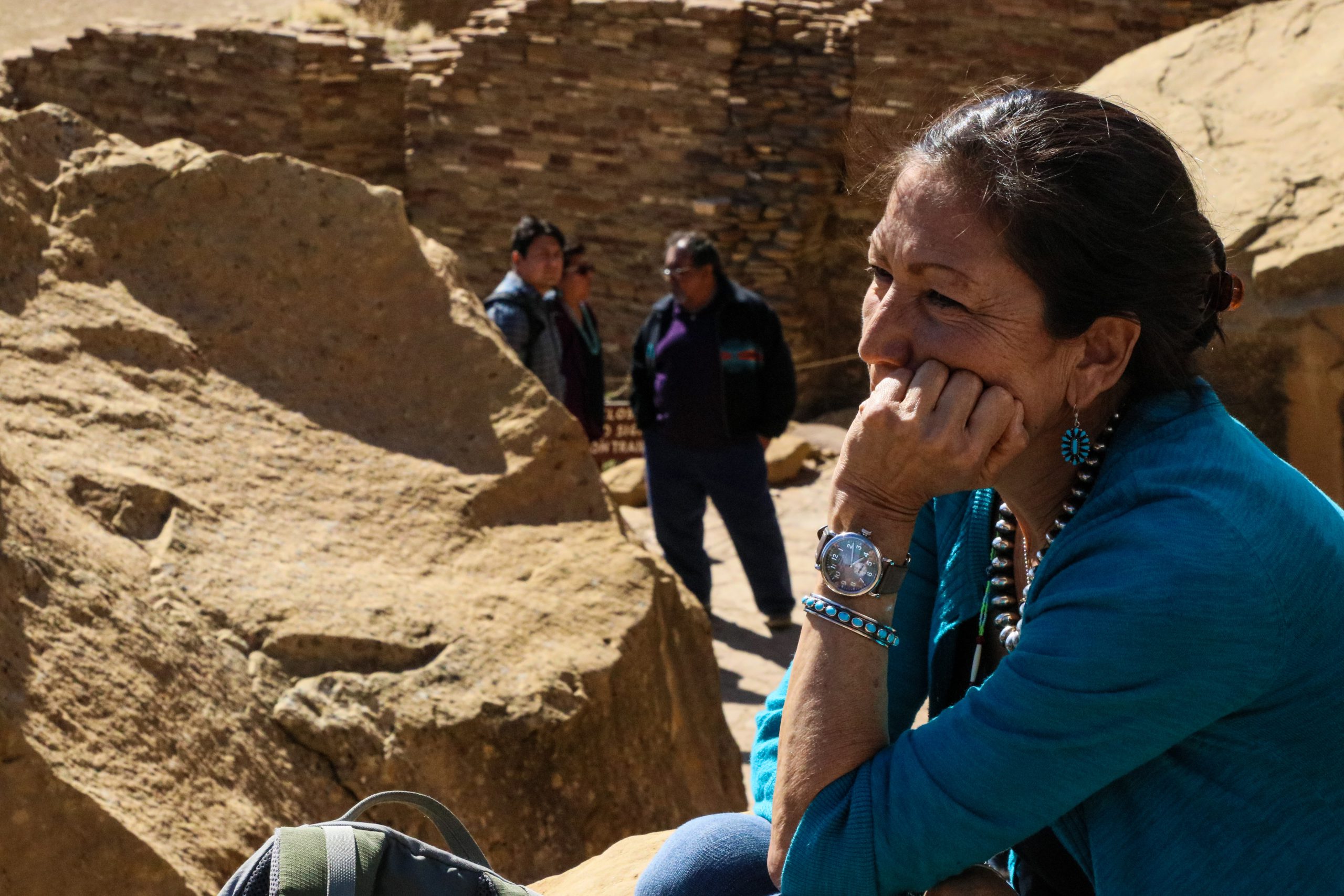Indianz.Com > News > Biden administration seeks to protect sacred areas in New Mexico from development

Secretary Haaland Announces Steps to Establish Protections for Culturally Significant Chaco Canyon Landscape
Interior Department to initiate a collaborative process to better steward the area’s cultural, historic, and geologic values
Monday, November 15, 2021
Indianz.Com
The following is the text of a November 15, 2021, news release from the Department of the Interior.
WASHINGTON, D.C — During the Biden-Harris administration’s first White House Tribal Nations Summit later today, President Biden will announce that the Department of the Interior is taking steps to protect the Chaco Canyon and the greater connected landscape with a rich Tribal and cultural legacy in northwest New Mexico.
The Bureau of Land Management (BLM) will initiate consideration of a 20-year withdrawal of federal lands within a 10-mile radius around Chaco Culture National Historical Park, which would bar new federal oil and gas leasing on those lands.
“Chaco Canyon is a sacred place that holds deep meaning for the Indigenous peoples whose ancestors lived, worked, and thrived in that high desert community,” said Secretary Deb Haaland. “Now is the time to consider more enduring protections for the living landscape that is Chaco, so that we can pass on this rich cultural legacy to future generations. I value and appreciate the many Tribal leaders, elected officials, and stakeholders who have persisted in their work to conserve this special area.”
In the coming weeks, the BLM intends to publish a notice in the Federal Register that will commence a two-year segregation of the federal lands while the bureau conducts an environmental analysis and seeks public comment on the proposed administrative withdrawal. BLM will also initiate formal Tribal consultation. The segregation and potential withdrawal would not affect existing valid leases or rights and would not apply to minerals owned by private, State, or Tribal entities.
The Department of the Interior (DOI) conserves and manages the Nation’s natural resources and cultural heritage for the benefit and enjoyment of the American people, provides scientific and other information about natural resources and natural hazards to address societal challenges and create opportunities for the American people, and honors the Nation’s trust responsibilities or special commitments to American Indians, Alaska Natives, and affiliated island communities to help them prosper.
Related Stories
Center for Western Priorities welcomes protections for sacred areas in New Mexico (November 15, 2021)White House releases ‘progress report’ for Tribal Nations Summit (November 15, 2021)
White House Fact Sheet: Building A New Era of Nation-to-Nation Engagement (November 15, 2021)
White House Tribal Nations Summit – Day One – November 15, 2021 (November 14, 2021)
White House Tribal Nations Summit – Day Two – November 16, 2021 (November 14, 2021)
President Biden revives White House Tribal Nations Summit (September 22, 2021)
Search
Filed Under
Tags
More Headlines
NAFOA: 5 Things You Need to Know this Week (December 8, 2025)
Chuck Hoskin: Cherokee Nation benefits from extension of health care credits
Native America Calling: Tribal museums reflect on tumultuous year, chart their next steps
Press Release: National Museum of the American Indian hosts Native art market
AUDIO: Sea Lion Predation in the Pacific Northwest
Native America Calling: Tribal colleges see an uncertain federal funding road ahead
Native America Calling: Short films taking on big stories
Native America Calling: Advocates push back against new obstacles to Missing and Murdered Indigenous Relatives momentum
Native America Calling: For all its promise, AI is a potential threat to culture
NAFOA: 5 Things You Need to Know this Week (November 24, 2025)
Chuck Hoskin: Cherokee Nation invests in rural transportation
Native America Calling: Native candidates make strides in local elections
National Congress of American Indians returns incumbents and welcomes newcomers to leadership
National Congress of American Indians chooses leadership at big convention
‘Not voting is still a vote’: Native turnout drops amid changes in political winds
More Headlines
Chuck Hoskin: Cherokee Nation benefits from extension of health care credits
Native America Calling: Tribal museums reflect on tumultuous year, chart their next steps
Press Release: National Museum of the American Indian hosts Native art market
AUDIO: Sea Lion Predation in the Pacific Northwest
Native America Calling: Tribal colleges see an uncertain federal funding road ahead
Native America Calling: Short films taking on big stories
Native America Calling: Advocates push back against new obstacles to Missing and Murdered Indigenous Relatives momentum
Native America Calling: For all its promise, AI is a potential threat to culture
NAFOA: 5 Things You Need to Know this Week (November 24, 2025)
Chuck Hoskin: Cherokee Nation invests in rural transportation
Native America Calling: Native candidates make strides in local elections
National Congress of American Indians returns incumbents and welcomes newcomers to leadership
National Congress of American Indians chooses leadership at big convention
‘Not voting is still a vote’: Native turnout drops amid changes in political winds
More Headlines
